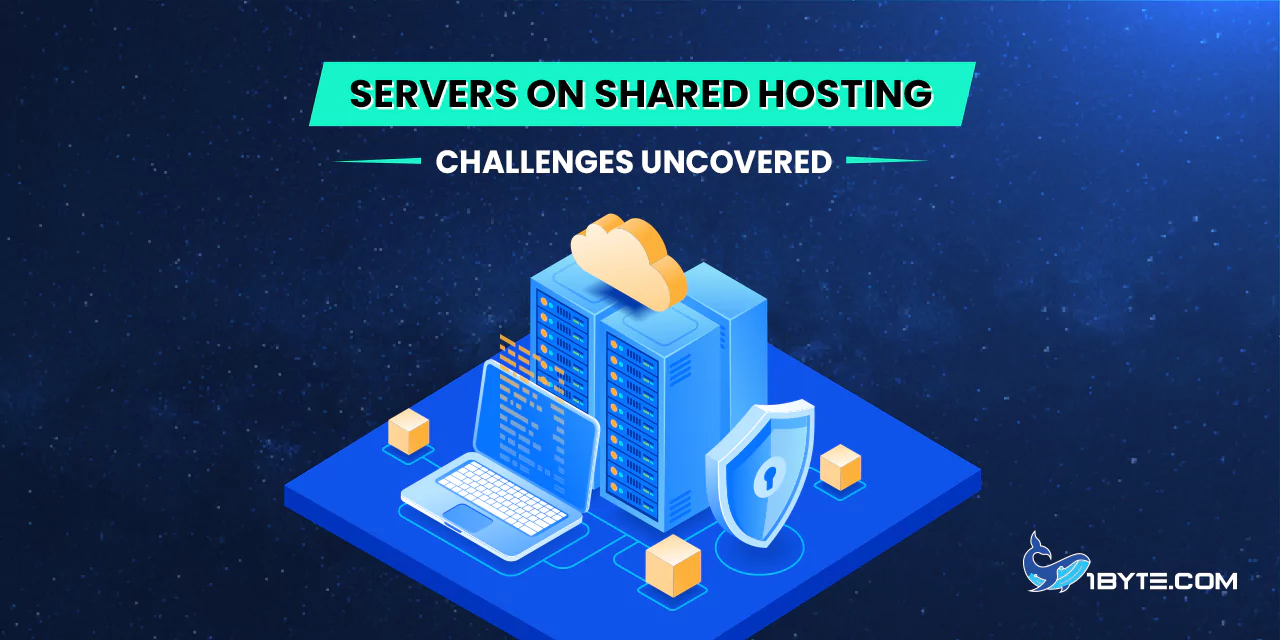Within the ever-evolving digital landscape, email remains an indispensable communication tool. For those seeking cost-effective hosting solutions, shared hosting often appears as an attractive choice. It’s budget-friendly, user-friendly, and seemingly convenient. However, beneath the surface, there are significant concerns and challenges associated with email servers on shared hosting. In this article, we will delve into the world of “Email Servers on Shared Hosting” and uncover the complexities that users should be aware of. So, let’s explore the intricacies of this hosting option and reveal the hidden obstacles that might affect your email communications.
Shared Environment Vulnerabilities
One of the significant challenges of using email servers on shared hosting is the shared environment itself. Since multiple users share the same server resources, it creates an environment where vulnerabilities can arise due to the actions of others.
In this shared space, not all users have honorable intentions. Some individuals may exploit the shared platform for malicious purposes, such as sending spam emails or engaging in phishing activities. This unethical behavior can lead to severe consequences.
When shared hosting email servers are used for spamming or phishing, they can end up on the blacklist of various email service providers and network operators. This blacklist is a collection of servers known for suspicious or harmful activities. Being on this list means emails from that server are often marked as potential threats or even blocked entirely.
As a result, legitimate users who share the same email server may suffer from email delivery issues. Their emails might end up in recipients’ spam folders or not be delivered at all, causing frustration and hampering effective communication.
Removal from Blacklists is a Time-Consuming Process
When a mail server on shared hosting gets blacklisted, getting it removed is a time-consuming process. This process can be frustrating and potentially disruptive to your email communication. Below is the process of getting a mail server on shared hosting removed from a blacklist, broken down into steps:
- Submit a request form: To initiate the removal procedure, you typically need to submit a formal request to the relevant blacklist authorities. This request should include details about the actions you’ve taken to address the issue, demonstrating your commitment to resolving the problem.
- Wait for a response from the blacklist authority: After submitting your request, you must wait for a response from the blacklist authority. The waiting period can be unpredictable and might stretch over several days or even weeks, depending on their workload and response times.
- Verification by the blacklist authority: The blacklist authority will review your request and assess whether your shared hosting mail server is still exhibiting signs of spamming, phishing, or other malicious activities. If they find that the issues have been resolved, they will proceed with the removal process. However, if issues persist, you may have to wait further or take additional actions to address them.
- Wait for database update records: Once the blacklist authority confirms that the issues are resolved, they will need to update their database records to reflect that your mail server is no longer a source of concern. This step may also take some time.
It’s important to note that even after successful removal from the blacklist, the issue can potentially recur if there are users of the shared hosting who misuse the mail server for spamming or other prohibited activities. This means you might have to go through the removal process again in the future if the problem reemerges.
So, the process can be time-consuming and may involve repeated efforts to maintain your mail server’s reputation and ensure uninterrupted email communication.
FURTHER READING: |
| 1. What is an Email Domain: A Closer Look |
| 2. VoIP Advantages and Disadvantages for Business |
| 3. How Much Does Cloud-Hosted Calling Cost? |
Delivery Depends on the Recipient’s Mail Service
Whether an email sent from a shared hosting server reaches its intended destination can be influenced significantly by the recipient’s mail service. This is an important aspect of email communication to consider.
Certain email service providers, like Outlook, have robust filtering mechanisms in place. These filters are designed to detect and prevent potentially harmful or suspicious emails from reaching the recipient’s inbox. While this is an essential security feature, it can sometimes pose challenges for users of shared hosting email servers.
For instance, even if you send legitimate and harmless emails from your shared hosting server, they might encounter hurdles on their journey to the recipient’s inbox. Outlook’s filters, for instance, may categorize emails from shared hosting servers as “untrusted” due to the server’s association with potential spam or misuse. As a result, the recipient may not receive your email or may find it in their spam or junk folder.
This discrepancy in email delivery can lead to unpredictability and frustration. You may have no issues on your end, but the recipient’s mail service can act as a gatekeeper, determining whether your message is accepted or flagged.
Trusted Mail Hosting Providers is the Way to Go
Given the various challenges associated with shared hosting email servers, it’s advisable to encourage clients and users to opt for well-established and trusted Mail Hosting providers such as Gmail, Outlook, or other reputable services. These providers invest heavily in security, spam filtering, and reliability, ensuring a smoother email experience for all users.

While shared hosting may be cost-effective, it comes with inherent limitations and risks when it comes to hosting email services. To ensure reliable and secure email communication, especially for business purposes, considering dedicated Mail Hosting providers is often the wiser choice.
Leverage 1Byte’s strong cloud computing expertise to boost your business in a big way
1Byte provides complete domain registration services that include dedicated support staff, educated customer care, reasonable costs, as well as a domain price search tool.
Elevate your online security with 1Byte's SSL Service. Unparalleled protection, seamless integration, and peace of mind for your digital journey.
No matter the cloud server package you pick, you can rely on 1Byte for dependability, privacy, security, and a stress-free experience that is essential for successful businesses.
Choosing us as your shared hosting provider allows you to get excellent value for your money while enjoying the same level of quality and functionality as more expensive options.
Through highly flexible programs, 1Byte's cutting-edge cloud hosting gives great solutions to small and medium-sized businesses faster, more securely, and at reduced costs.
Stay ahead of the competition with 1Byte's innovative WordPress hosting services. Our feature-rich plans and unmatched reliability ensure your website stands out and delivers an unforgettable user experience.
As an official AWS Partner, one of our primary responsibilities is to assist businesses in modernizing their operations and make the most of their journeys to the cloud with AWS.
Limited Features and Functionality
Email servers bundled with shared hosting, as the name suggests, come as part of the hosting package. However, they often fall short in terms of features and functionalities when compared to dedicated Mail Hosting providers such as Gmail, Outlook and more.
Shared Mail Hosting is generally budget-friendly and suitable for testing, experimentation, or personal use. However, it may not meet the demands of serious business operations. It’s essential to consider your specific email requirements and business needs.
One significant limitation of shared hosting email services is that they may provide basic functionality like sending and receiving emails but might not offer robust spam filters, encryption options, or reliable email delivery assurance.
It’s also important to note that at 1Byte, our primary focus is on web hosting services, and while we ensure shared Mail Hosting operates smoothly for tasks like sending and receiving emails, there are limitations. We may not provide extensive support for issues like email delivery assurance, preventing emails from landing in spam folders, or resolving complex email-related problems.
Dedicated Mail Hosting providers, on the other hand, are engineered to meet diverse email demands. They offer advanced functionalities such as robust spam filters, encryption options, ample storage space, and reliable email delivery. This makes them a better choice for businesses and organizations with critical email communication needs.
Therefore, those considering email servers on shared hosting should carefully evaluate their specific email requirements and business goals. If your needs extend beyond basic email functionality, especially in a business context, dedicated Mail Hosting providers may offer a more feature-rich and effective email solution.

